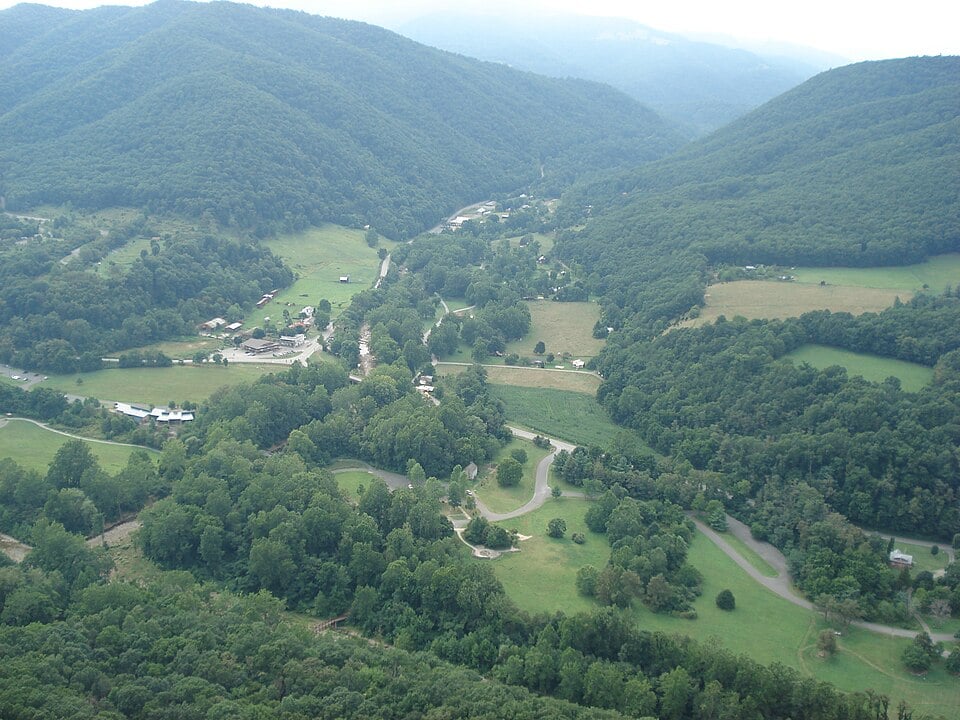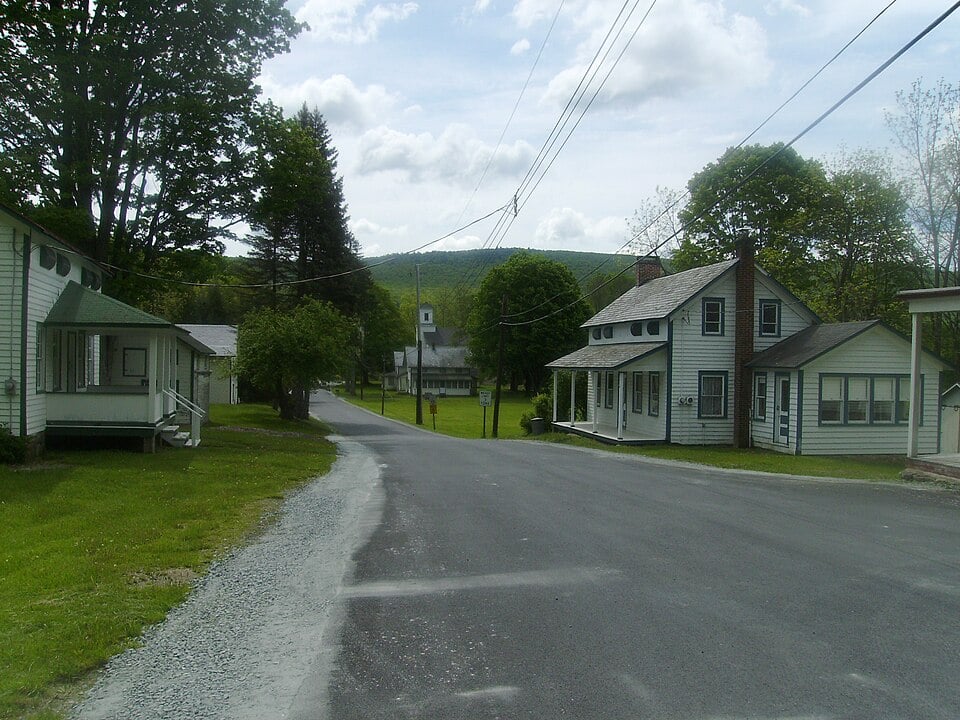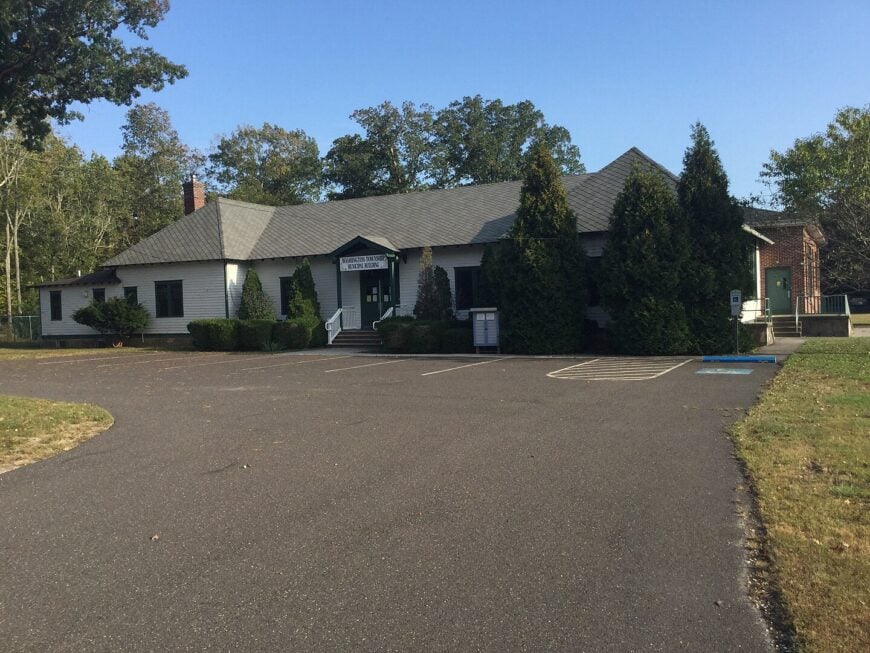
Southeast New Jersey still hides pockets of quiet that feel worlds apart from the turnpike image most outsiders picture. Pine-scented forests, tidal rivers, and wide coastal marshes wrap around small communities where porch lights outnumber streetlights and night skies remain properly dark.
The twenty five towns below keep their circles tight, their histories intact, and their road signs few, offering places to unplug without traveling far from the Mid-Atlantic. We profile the character of each settlement, spotlight everyday pastimes, and explain exactly how to reach them should the urge for stillness strike.
From cedar-shingled oyster sheds to cranberry bog horizons, these villages prove that South Jersey can still whisper. Let the countdown begin.
25. Batsto
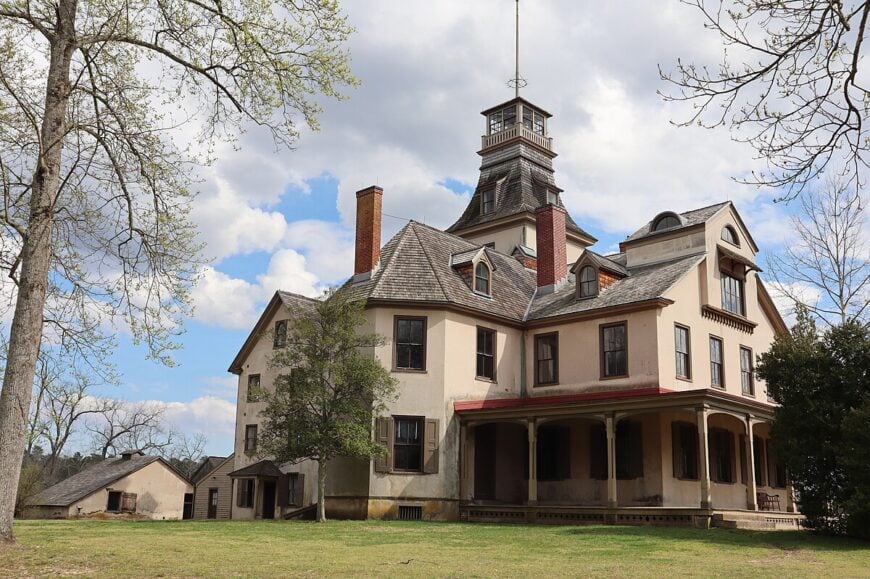
Batsto, New Jersey, lies deep in the Pine Barrens, where thick forests and sandy roads make it feel far removed from the modern world. Once a bustling iron-making village, it now stands as a preserved historic site, its buildings frozen in time.
The atmosphere carries a quiet mystery, with an old mansion, mill, and general store whispering of lives once lived here. Visitors can tour the Batsto Mansion, walk shaded trails through the pines, or watch the Mullica River drift past the village ruins.
Canoeing and birdwatching add to the sense of escape, blending nature with history in every step. Batsto lingers with you as a place where the past feels startlingly present, softened by the stillness of the woods.
Where is Batsto?
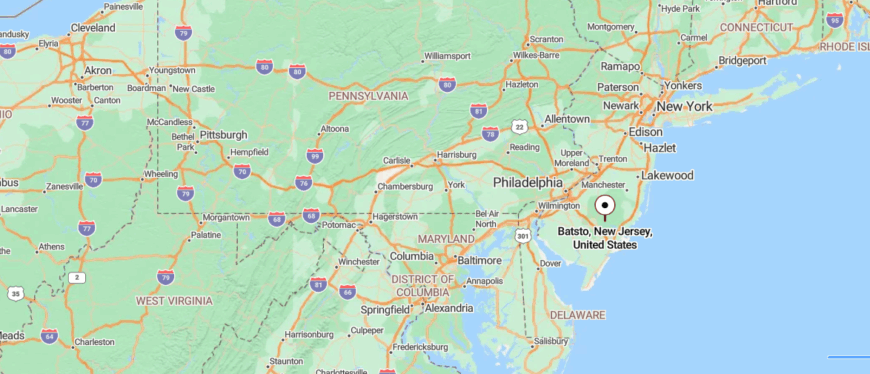
Batsto, New Jersey sits deep in the Pine Barrens of southern New Jersey, about 20 miles northwest of Atlantic City. The route in follows New Jersey Route 542, where the forest grows dense and the road narrows into long stretches of pine and cedar.
Known for its preserved ironworks village, Batsto feels more like a step into history than a stop on a map. Here, the quiet woods and abandoned ruins create a seclusion that feels both timeless and untouched.
24. Hog Wallow
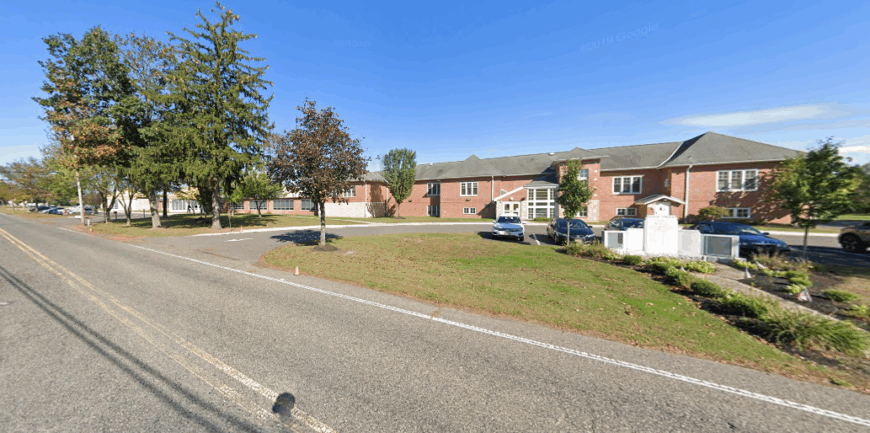
Hog Wallow, New Jersey, sits tucked into the Pine Barrens, hidden among winding sand roads that keep it well off the beaten path. Once a tiny logging and charcoal settlement, it has long since faded, leaving behind stories more than structures.
The air here feels hushed and wild, with the scent of pine and the crunch of needles underfoot guiding anyone who wanders in. Visitors come for the seclusion itself—exploring the quiet woods, spotting rare wildlife, or tracing the unmarked trails that weave through the barrens.
Unlike many places, there is little to “see,” yet that is its quiet charm, where absence becomes the attraction. Hog Wallow draws you in with the feeling that some towns never truly vanish, they just dissolve back into the forest that first shaped them.
Where is Hog Wallow?
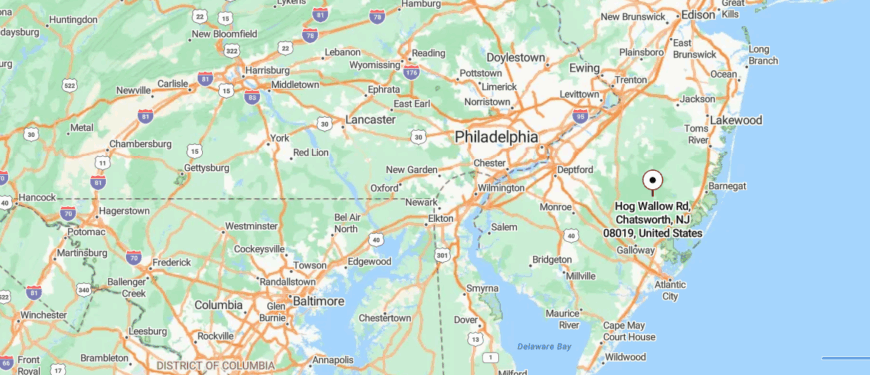
Hog Wallow, New Jersey lies hidden in the heart of the Pine Barrens, about 10 miles east of Hammonton. The way there follows sandy, winding forest roads that branch off from Route 206 and narrow into single tracks beneath tall pines.
With no real town center and only scattered clearings, it feels more like a name whispered on a map than a place you arrive at. Among the still trees and sandy soil, the quiet carries a sense of being far removed from everything else.
23. Jenkins Neck
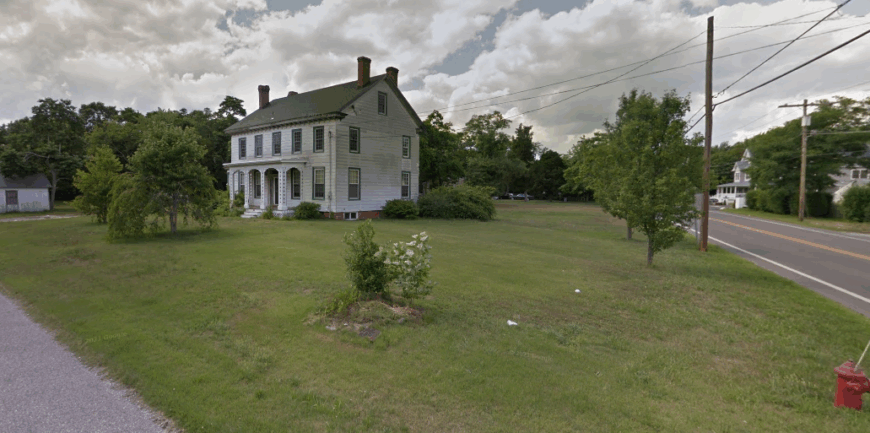
Jenkins, New Jersey, is a scarcely known spot in the Pine Barrens, tucked away on sandy backroads where only the pines and sky seem to keep company. Once a small rural settlement, little remains today beyond whispers of old homesteads and the traces of paths long reclaimed by the forest.
The atmosphere is still and earthy, filled with the scent of pitch pine, the flutter of wings, and the soft crunch of sand underfoot. Visitors might come seeking the solitude itself—walking among the quiet trees, birdwatching in the thickets, or simply feeling the vastness of the Barrens around them.
Farming and timber once shaped life here, though now nature has fully taken its place. Jenkins leaves you with the impression of a town that lingers not in buildings, but in the silence and mystery of the woods.
Where is Jenkins?

Jenkins, New Jersey sits in Ocean County, tucked within the stretch of the Pine Barrens about 15 miles west of Toms River. To reach it, you leave the main highways and follow smaller county roads that fade into sandy forest tracks surrounded by thick pine stands.
The place itself has little more than traces of settlement, blending almost entirely into the woodland around it. Out beneath the canopy, Jenkins feels less like a town and more like a quiet pause inside the forest.
22. Weekstown
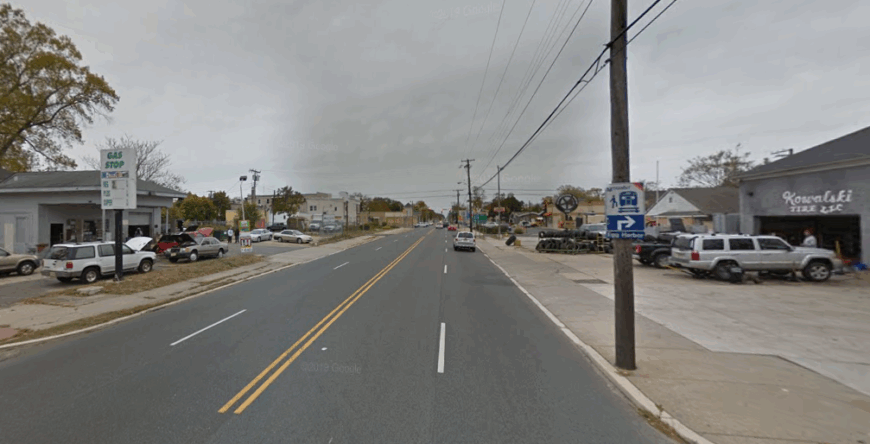
Weekstown, New Jersey, lies tucked within the Pine Barrens, surrounded by sandy roads and thick stands of pine that make it feel far from the bustle of nearby shore towns. Once a small hub for logging and charcoal making, it has quieted into a rural crossroads where the forest steadily reclaims the land.
The atmosphere is rustic and hushed, broken only by the call of birds and the rustle of wind through the trees. Visitors can fish in nearby streams, wander the backroads that thread through the Barrens, or watch the night sky open wide in the absence of city lights.
Farming and small homesteads still give the area its rhythm, though most of the old industries are gone. Weekstown leaves you with the sense of a place where time drifts slowly, measured more by the seasons than the clock.
Where is Weekstown?
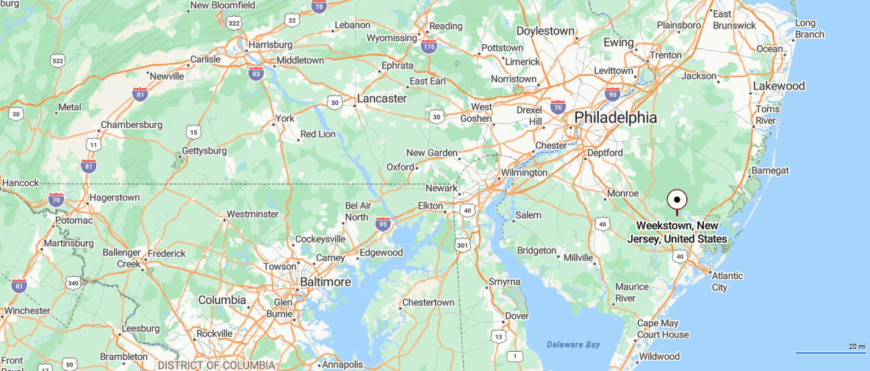
Weekstown, New Jersey is found in Atlantic County on the edge of the Pine Barrens, about 7 miles northwest of Mullica Township. Travelers reach it by turning off Route 542 onto narrow rural roads that pass through stretches of pine forest and low wetlands.
The community is small and scattered, with the woods pressing close on all sides. In Weekstown, the quiet roads and shaded trees make it feel like a pocket of calm hidden from the wider world.
21. Marshallville
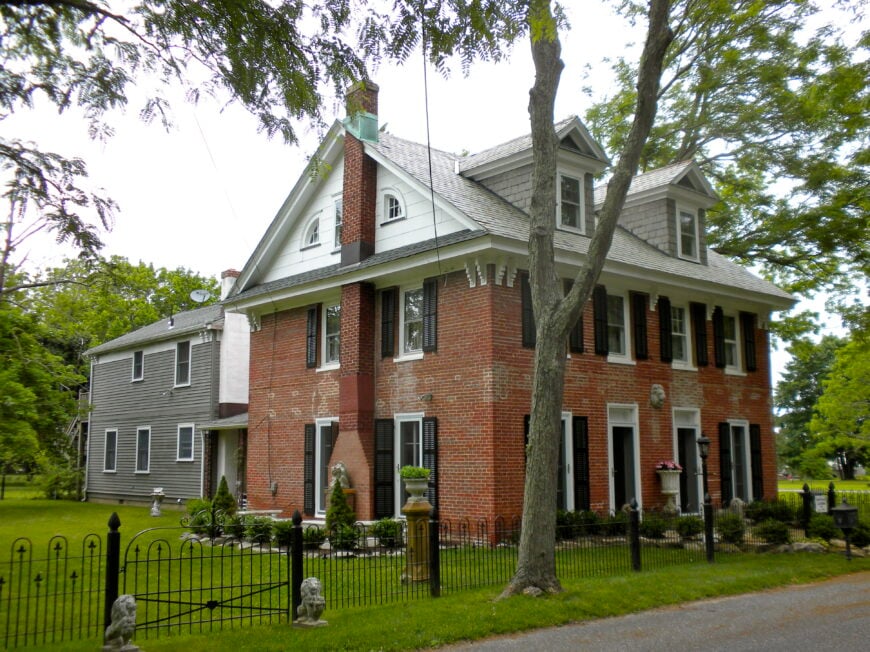
Marshallville, New Jersey, rests along the banks of the Tuckahoe River, a quiet village surrounded by marshland and pine forest that keeps it feeling tucked away. Once alive with shipbuilding and iron furnaces, its history lingers in old homesteads and the traces of mills that once powered the town.
The atmosphere is calm and weathered, with river breezes carrying the scent of salt marsh and the sound of ospreys overhead. Visitors can kayak the winding Tuckahoe, explore the nearby wildlife management areas, or stroll past historic homes that echo another era.
The land still leans on farming and river life, though Marshallville itself is more memory than industry now. It’s the kind of place where history, water, and silence fold together, reminding you how deeply the past can shape the present.
Where is Marshallville?
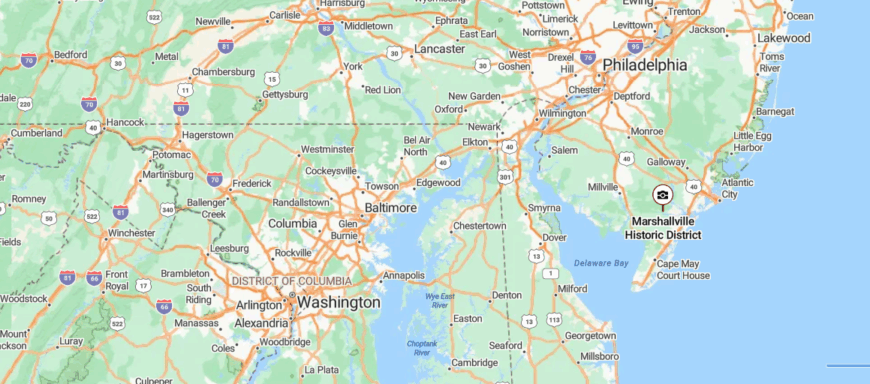
Marshallville, New Jersey lies in Cape May County, about 10 miles northwest of Cape May Court House and tucked along the Tuckahoe River. To get there, you follow winding county roads that narrow as they pass through marshland and thick stands of oak and pine.
The village is small, with just a few historic buildings and homes pressed against the river’s edge. Standing by the water, you feel the stillness of the marsh and the sense that the outside world has drifted far away.
20. Cologne
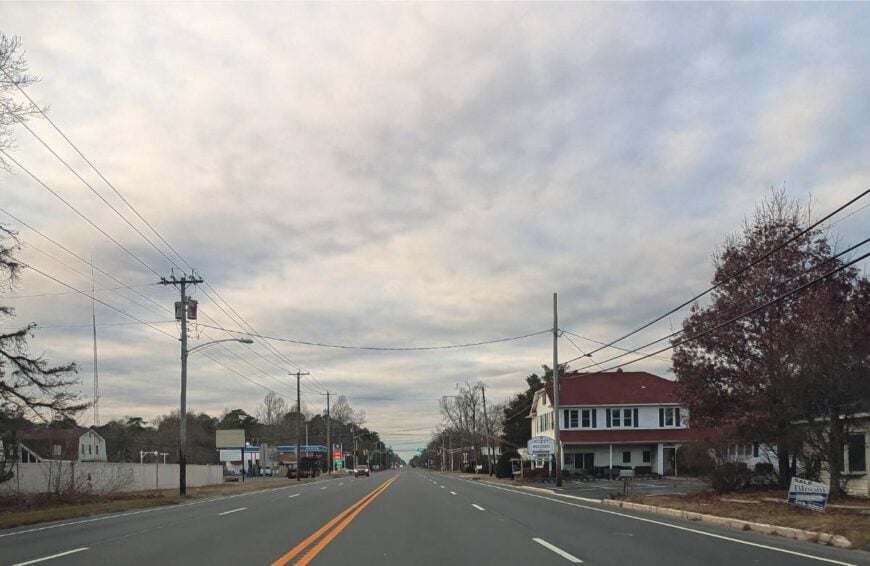
Cologne, New Jersey, sits quietly in Atlantic County, surrounded by pine woods and farmland that make it feel worlds apart from the nearby shore towns. Once known for its glassworks and as a stop along the old rail lines, the traces of its industrious past linger in scattered buildings and the rhythm of the land.
The town’s atmosphere is unhurried, where the air smells of pine resin and fields stretch under wide skies. Visitors can wander backroads through the Pines, explore nearby historic churches, or stop at small local farms that keep the area rooted in tradition.
Agriculture and a touch of tourism shape life here, steady and modest, tied closely to the land. Cologne stays with you as a reminder that some places remain grounded in simplicity, carrying history gently into the present.
Where is Cologne?
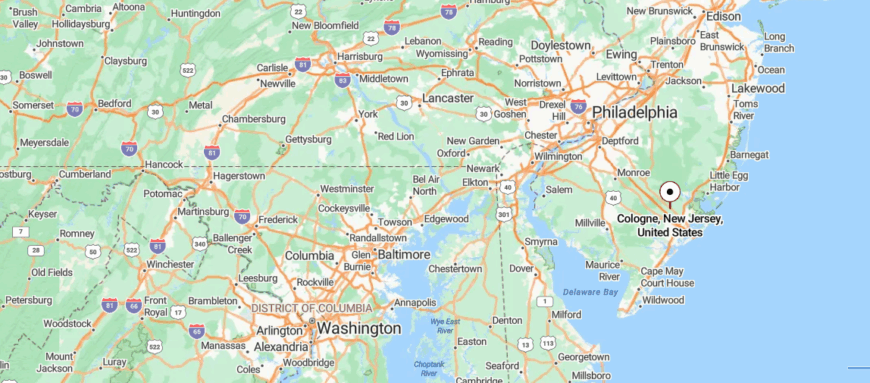
Cologne, New Jersey sits in Atlantic County, about 5 miles northwest of Egg Harbor City along U.S. Route 30. The road in is a straight stretch of the White Horse Pike, but once you leave it, quiet backroads wind into farmland and pockets of pine woods.
Though close to larger towns, Cologne feels modest and set apart, with only scattered homes and fields marking its presence. In the hush of those backroads, it carries the sense of being on the edge of both forest and memory.
19. Elwood
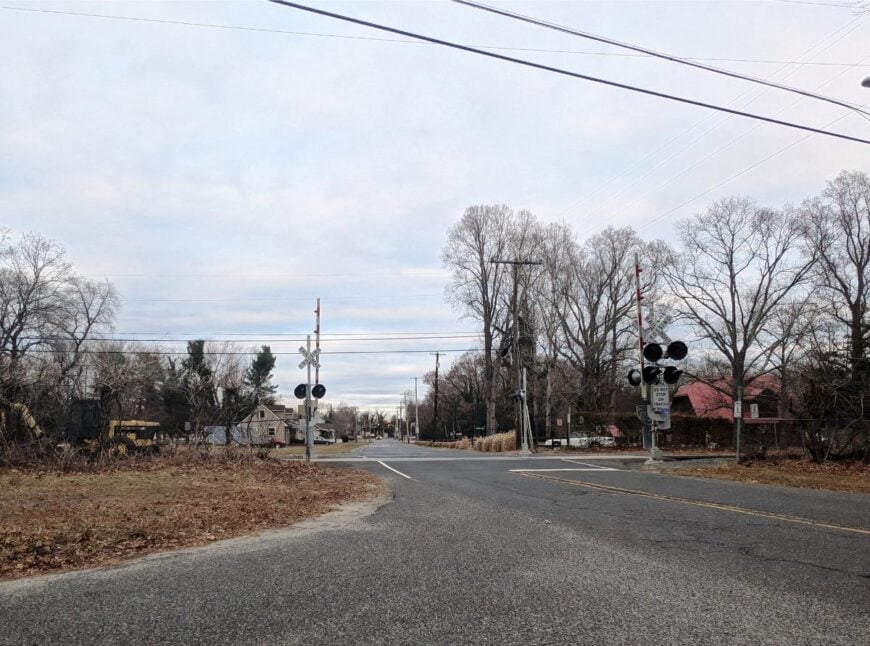
Elwood, New Jersey, rests along the edge of the Pine Barrens, a small community where sandy roads, oak groves, and stretches of farmland give it a sense of being tucked away. Once a stop along the rail line, it has settled into a quieter rhythm, defined more by family farms and wide skies than by industry.
The atmosphere feels open and steady, with the scent of pine on the breeze and evenings that grow still except for crickets and distant trains. Visitors passing through can explore nearby Wharton State Forest, paddle the rivers that weave through the Pines, or follow backroads that seem to stretch endlessly.
Farming remains a thread of life here, grounding the town in its rural roots. Elwood leaves you with the feeling of a place where time slows, and the landscape sets the pace.
Where is Elwood?

Elwood, New Jersey rests in Atlantic County, about 20 miles west of Atlantic City along U.S. Route 30. Travelers arrive by the White Horse Pike, then slip into smaller county roads bordered by stretches of pine forest and open fields.
The town is little more than a cluster along the roadside, surrounded by quiet woods and farmland. Out there, the blend of trees and sky gives Elwood a stillness that feels far from the nearby shore towns.
18. Heislerville
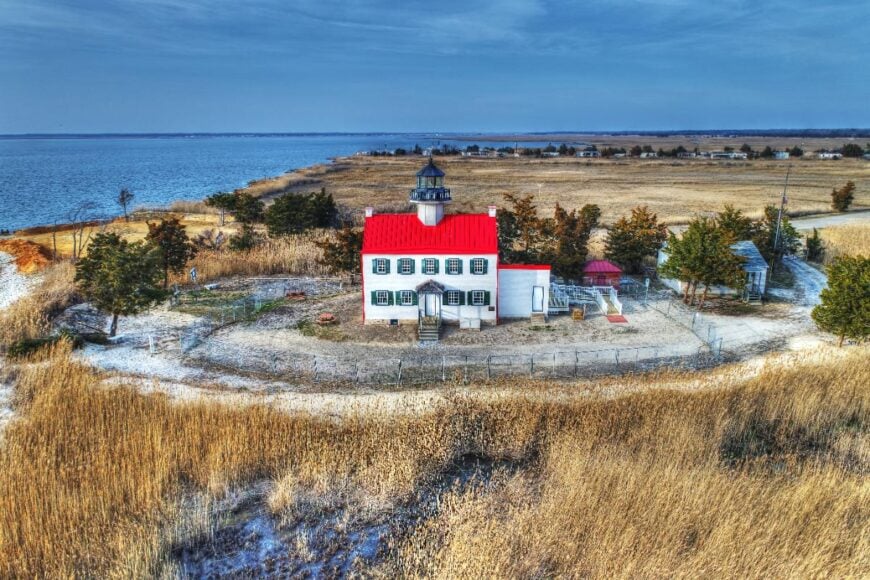
Heislerville, New Jersey, lies at the edge of the Delaware Bay, where winding marshes and tidal flats stretch far into the horizon and keep the town feeling worlds away. Once supported by fishing and oystering, its roots still linger in weathered docks and boats tied along the shore.
The atmosphere is salty and windswept, with gulls circling overhead and the smell of the bay carrying through the streets. Visitors come for the East Point Lighthouse, to watch sunsets burn over the water, or to explore the nearby wildlife refuge where migratory birds fill the sky.
Fishing and small-scale bay work continue to shape the rhythm of life, even as nature steadily reclaims the edges. Heislerville leaves you with the quiet pull of a place shaped more by tide and wind than by time itself.
Where is Heislerville?
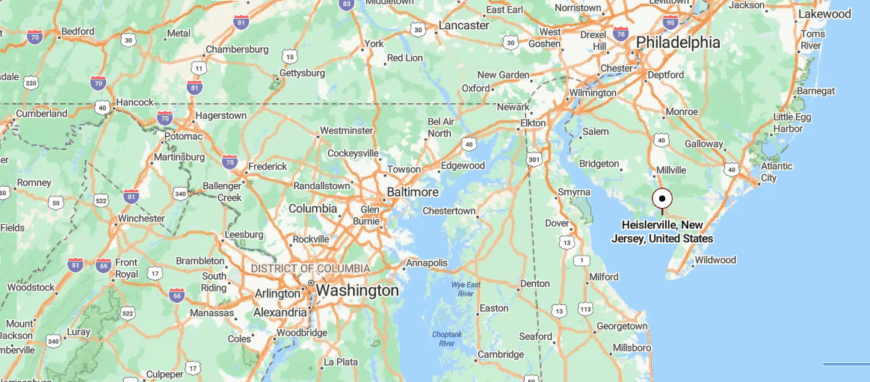
Heislerville, New Jersey sits in Cumberland County near the southern edge of the state, about 12 miles south of Millville. You reach it by following Route 555, which narrows into winding backroads that eventually give way to marshland and the tidal flats of the Delaware Bay.
The village itself is small, set among old houses and working docks that face the open water. With the salt air drifting inland and wide marshes stretching to the horizon, Heislerville feels like a place at the end of the road.
17. Eldora
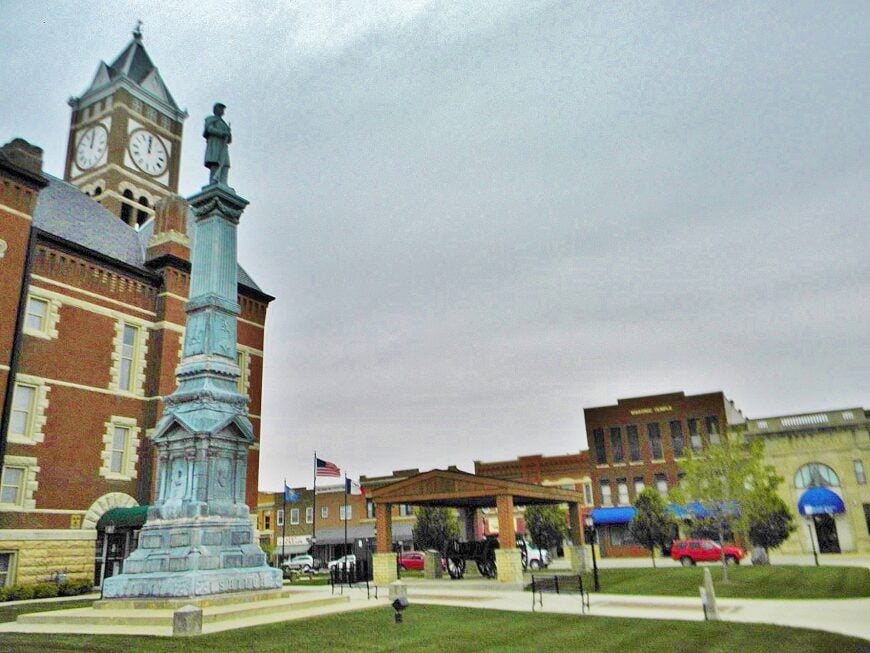
Eldora, New Jersey, sits quietly in Cape May County, hidden between stretches of forest and marsh that give it a secluded, almost forgotten air. Once sustained by glassmaking and small farms, today it feels more like a scattering of homes than a town, with nature pressing close on all sides.
The mood is hushed and still, with pine-scented breezes drifting through and birdsong carrying across the lowlands. Visitors might explore nearby wetlands, follow sandy backroads through the Pines, or stop at the Eldora Nature Preserve to wander its trails.
Farming and conservation shape what remains of its rhythm, tying the community to both land and history. Eldora lingers with the sense of a place where simplicity and silence remain its strongest landmarks.
Where is Eldora?
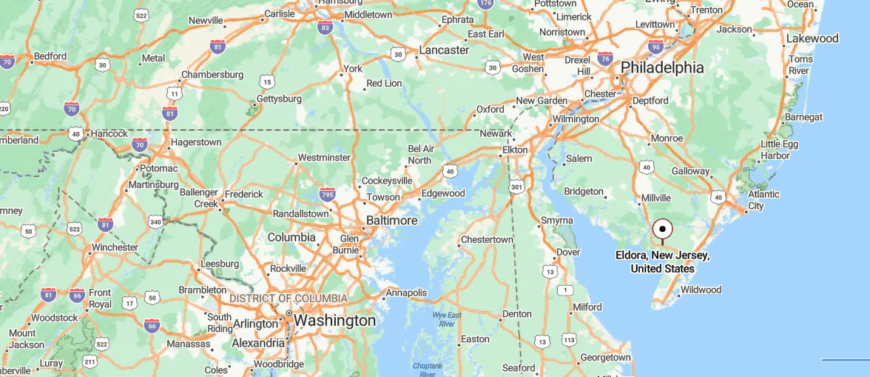
Eldora, New Jersey is tucked in Cape May County, about 8 miles west of Sea Isle City and the barrier island coast. It’s reached by narrow stretches of Route 550 and county lanes that pass through low woodlands and quiet fields.
The village is small, with only a scattering of homes and the surrounding wetlands pressing close. In Eldora, the muted sound of wind through trees and marsh grass makes it feel like a hidden corner where time slows down.
16. Pleasant Mills

Pleasant Mills, New Jersey, is tucked deep within the Pine Barrens, where sandy roads weave past cedar swamps and quiet forest clearings. Once a mill village powered by the Great Egg Harbor River, it has long since slipped into stillness, leaving behind the old Pleasant Mills Church and scattered reminders of its past.
The atmosphere is serene yet timeless—the scent of pine and cedar heavy in the air, with water flowing gently through the dark, tea-colored streams. Visitors can explore the historic churchyard, paddle the Mullica River nearby, or hike through Wharton State Forest’s winding trails.
The area’s history of mills and iron furnaces has given way to nature and conservation, with the land now defining the pace of life. Pleasant Mills draws you in with its quiet persistence, the kind of place where history fades into the forest without ever truly disappearing.
Where is Pleasant Mills?

Pleasant Mills, New Jersey lies in Atlantic County within the Pine Barrens, about 6 miles south of Hammonton. The way in follows Route 542, which bends through thick pine forests and quiet stretches of the Mullica River.
At its center stands a historic mill and a handful of homes, with the surrounding woods holding it in place like a secret. Here, the mix of river and forest creates a stillness that feels far removed from the rush of nearby towns.
15. Mizpah
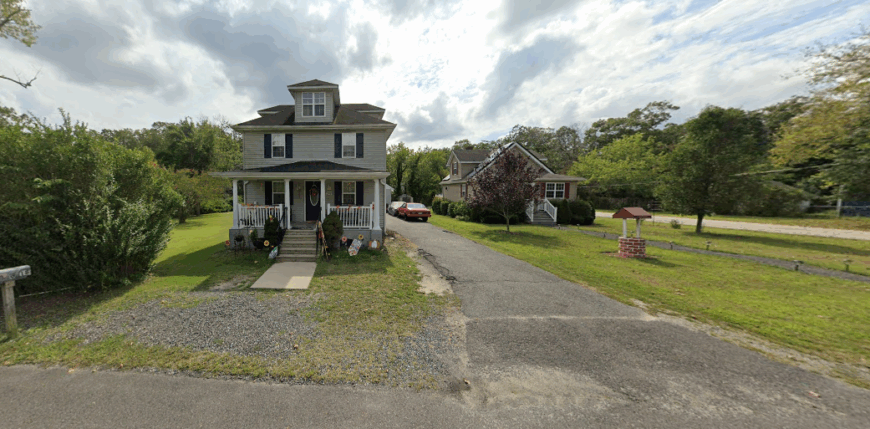
Mizpah, New Jersey, rests along the edge of the Pine Barrens, a small settlement that feels tucked away behind stretches of sandy soil and thick stands of pine. Founded in the early 1900s as a Jewish farming community, its roots still linger in the land, though much of its bustle has faded with time.
The atmosphere is simple and grounded, with open fields meeting forest edges and the quiet hum of rural life carrying through. Visitors might drive its backroads, explore nearby trails in the Barrens, or stop at local farmstands that reflect the area’s agricultural heritage.
Farming remains the thread that ties Mizpah to its beginnings, even as the forest steadily presses close. It’s the kind of place that reminds you how history and landscape can weave together, leaving a presence that feels both humble and enduring.
Where is Mizpah?
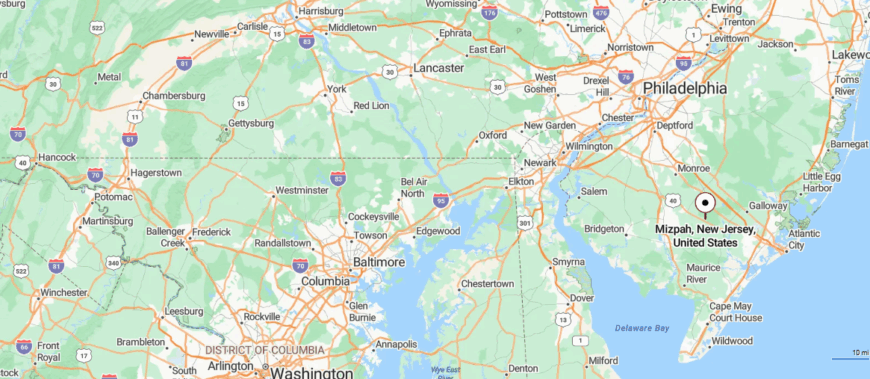
Mizpah, New Jersey sits in Atlantic County, about 5 miles west of Mays Landing along U.S. Route 40. The drive brings you through stretches of pine forest and farmland before narrowing into a quiet cluster of homes and roads.
Once known for its glassworks community, today it feels like a small outpost surrounded by the sweep of the Pine Barrens. In Mizpah, the woods press close enough that the world outside seems to fall away.
14. Port Republic
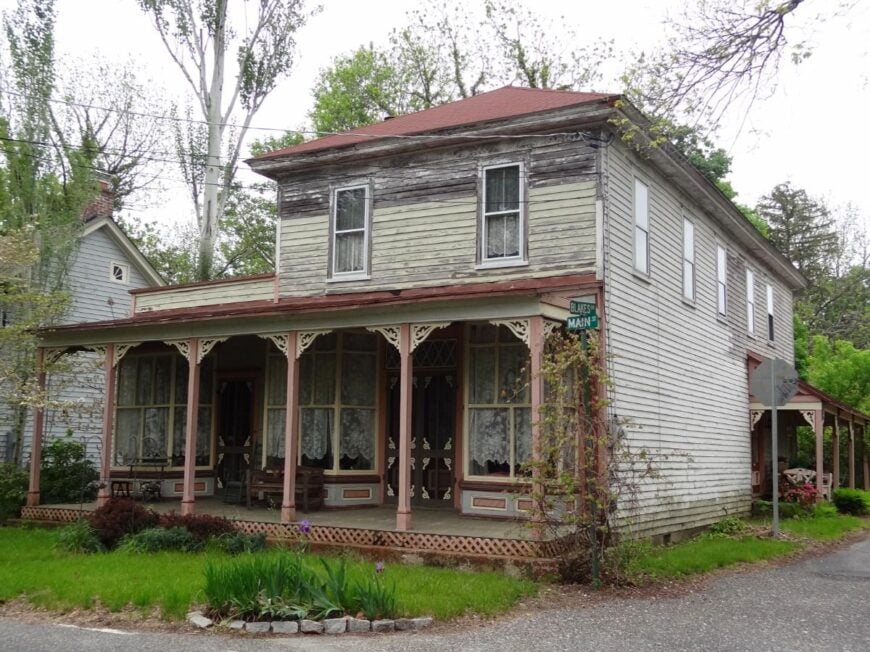
Port Republic, New Jersey, sits along the banks of the Mullica River, its quiet streets shaded by tall trees and lined with historic homes that speak to centuries past. Once a colonial port and shipbuilding town, it still carries that sense of history in its preserved architecture and riverside setting.
The mood here is peaceful and reflective, where the sound of river tides mixes with birdsong drifting from the surrounding woods. Visitors can tour the Port Republic Historic District, kayak the winding waterways of the Mullica, or wander trails that cut through salt marsh and pine.
The community blends old traditions with a rural calm, sustained by its closeness to the land and river. Port Republic draws you in with a feeling that time slows here, as if the past and present move together at the pace of the tide.
Where is Port Republic?
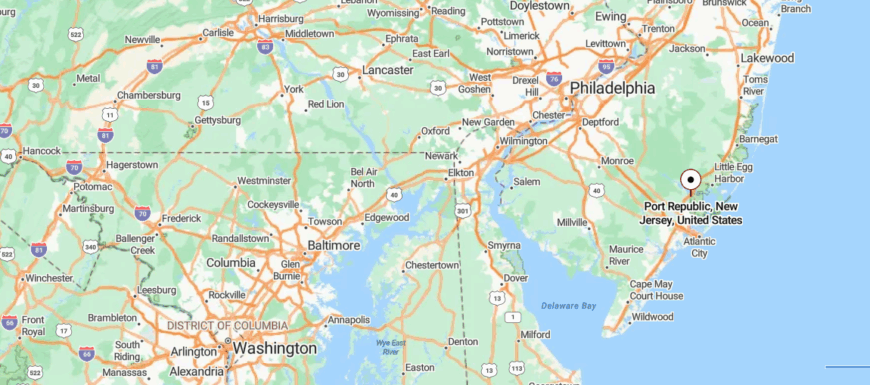
Port Republic, New Jersey lies in Atlantic County along the Mullica River, about 6 miles northeast of Egg Harbor City. You reach it by leaving the Garden State Parkway and following winding local roads that dip through marshes and pine stands before meeting the river’s edge.
The town is small but storied, with historic homes lining quiet streets and the tidal waters shaping its landscape. Surrounded by wetlands and forest, Port Republic feels like a riverside refuge tucked away from the bustle of the shore.
13. Dividing Creek
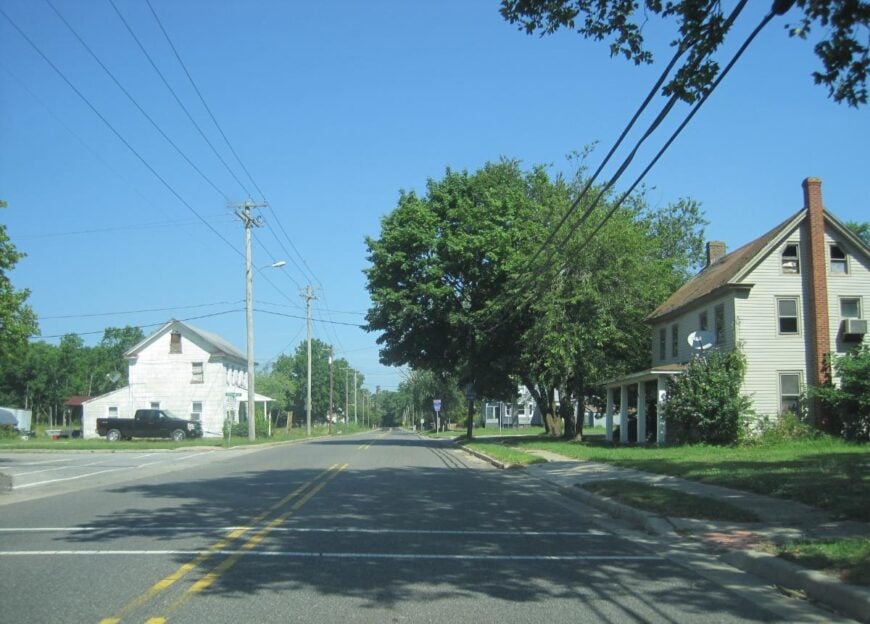
Dividing Creek, New Jersey, lies at the southern edge of Cumberland County, where winding creeks and sprawling marshland give it a sense of being set apart from the world. Once a hub for fishing and boatbuilding, the town now carries a quieter rhythm shaped by the tides of the Delaware Bay.
The atmosphere is briny and still, with the cries of herons and ospreys filling the air above the reeds. Visitors can fish or kayak in the backwaters, wander into the nearby wildlife management areas, or watch the sunset spill gold over the marshes.
Life here remains tied to the water, with small-scale fishing and conservation grounding the community. Dividing Creek stays with you as a reminder that true seclusion is often found where land and tide move as one.
Where is Dividing Creek?
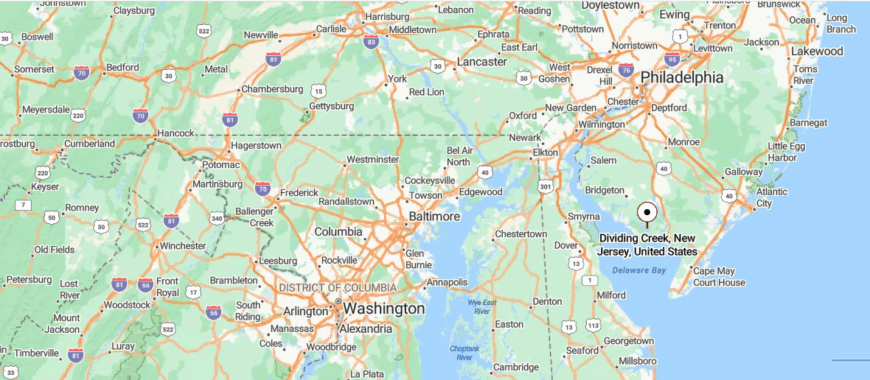
Dividing Creek, New Jersey is located in Cumberland County, about 15 miles south of Millville, where farmland fades into marshland. The way in follows Route 553, a two-lane road that narrows as it winds toward the tidal flats of the Delaware Bay.
The village itself is a small cluster of homes and a few old buildings, with creeks and wetlands spreading wide around it. Standing by the water’s edge, you feel the hush of the marsh and the sense that the rest of the world has slipped far behind.
12. Estell Manor
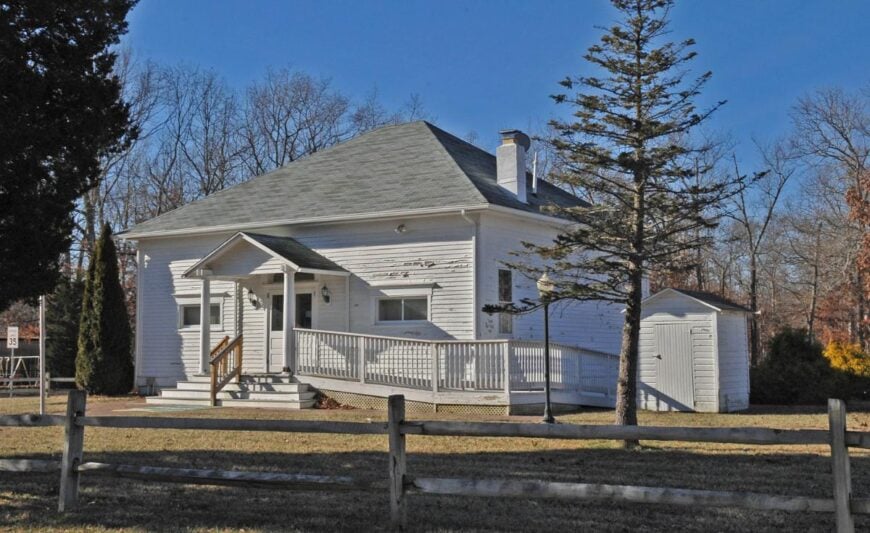
Estell Manor, New Jersey, rests quietly along the South River, surrounded by pine woods and wetlands that make it feel far removed from nearby shore towns. Once the site of an old glassworks and later a munitions factory, its history now lingers in ruins scattered throughout the forest.
The mood here is tranquil yet storied, with sandy trails weaving past mossy foundations and the scent of pine hanging heavy in the air. Visitors can explore Estell Manor Park, bike through shaded paths, kayak the winding river, or pause at historic cemeteries that echo the town’s past.
The land is shaped today more by nature and recreation than industry, with families and travelers drawn to its open spaces. Estell Manor leaves you with the impression of a place where history slowly fades into forest, yet never fully disappears.
Where is Estell Manor?
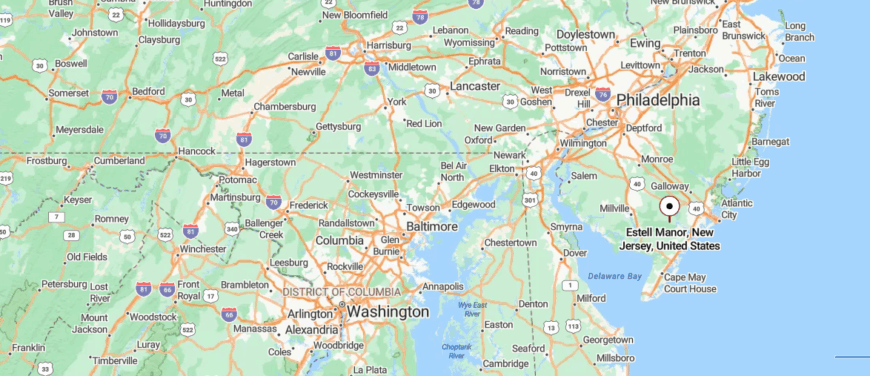
Estell Manor, New Jersey sits in Atlantic County, about 10 miles south of Mays Landing along Route 50. The road there cuts through long stretches of pine forest and sandy soil, with only a few clearings breaking the trees.
Best known for its state park and remnants of old glassworks, the community feels quiet and anchored in history. Out beneath the tall pines, Estell Manor carries the stillness of a town both connected and apart.
11. New Gretna
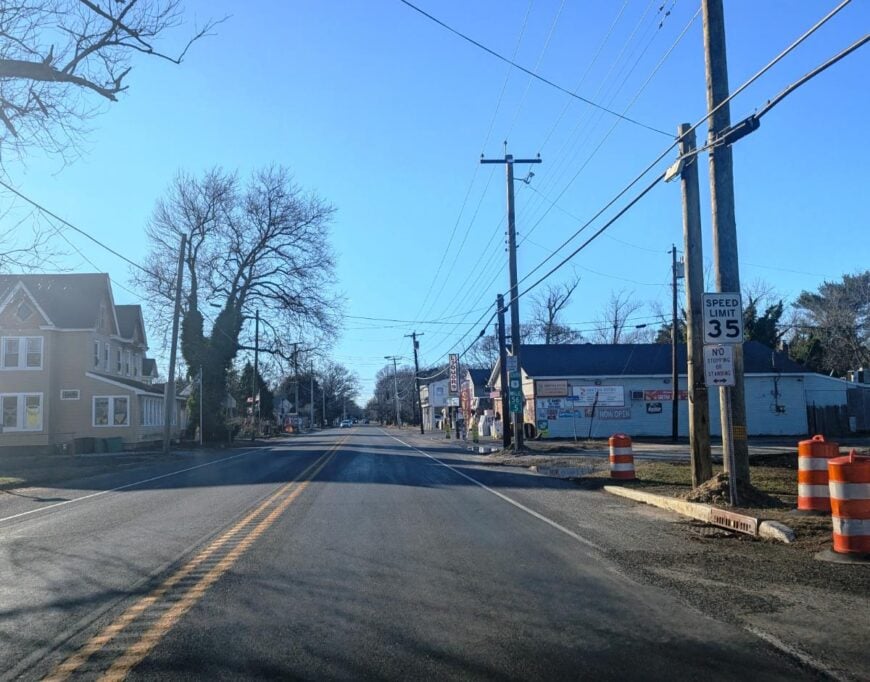
New Gretna, New Jersey, sits along the Bass River, a small village where salt marshes, pine woods, and winding backroads keep it feeling tucked away. Once a shipbuilding hub in the 18th and 19th centuries, its heritage lives on in historic homes and the quiet pride of a community tied to the water.
The atmosphere is calm and coastal, with the cry of gulls overhead and the briny scent of marshes drifting through town. Visitors can launch a kayak into the Bass River, stroll through the Bass River State Forest, or explore the backroads that weave between pine stands and tidal creeks.
Clamming, fishing, and small-town life remain steady anchors, giving New Gretna its enduring rhythm. It’s the kind of place where the river seems to tell the story, carrying both history and stillness on its tide.
Where is New Gretna?

New Gretna, New Jersey lies in Burlington County at the edge of the Pine Barrens, about 7 miles north of Tuckerton along U.S. Route 9. The route in runs beside marshland and creeks before narrowing into a small crossroads town framed by water and woods.
Fishing docks and boatyards tie it to the bay, yet its size and setting keep it modest and apart. In New Gretna, the tidal air and quiet streets make it feel like a resting place between forest and sea.
10. Green Bank
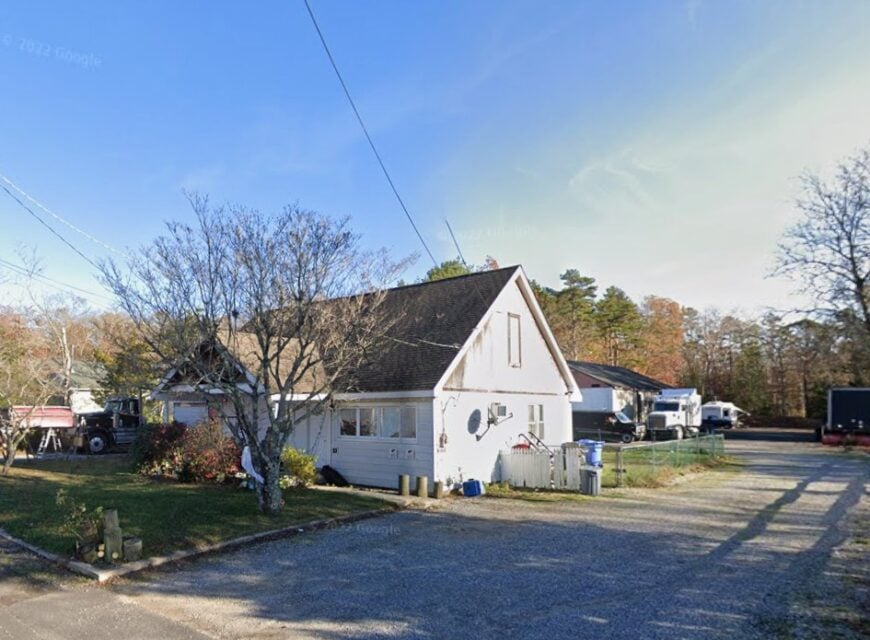
With fewer than 300 residents, Green Bank feels more like a riverside neighborhood than a town. Paddling the Mullica River, scanning tree lines for barred owls, and cycling sandy roads in Wharton State Forest fill most calendars.
A handful of family-run cranberry farms and seasonal fishing charters support the modest local economy. The nearest convenience store sits miles away, so locals stock pantries once a week in Egg Harbor City.
Thick pine barrens swallow radio signals and keep traffic to a trickle, encouraging porch conversations over screen time. Homes rest on multi-acre lots, sealing the sense of solitude Green Bank proudly guards.
Where is Green Bank?
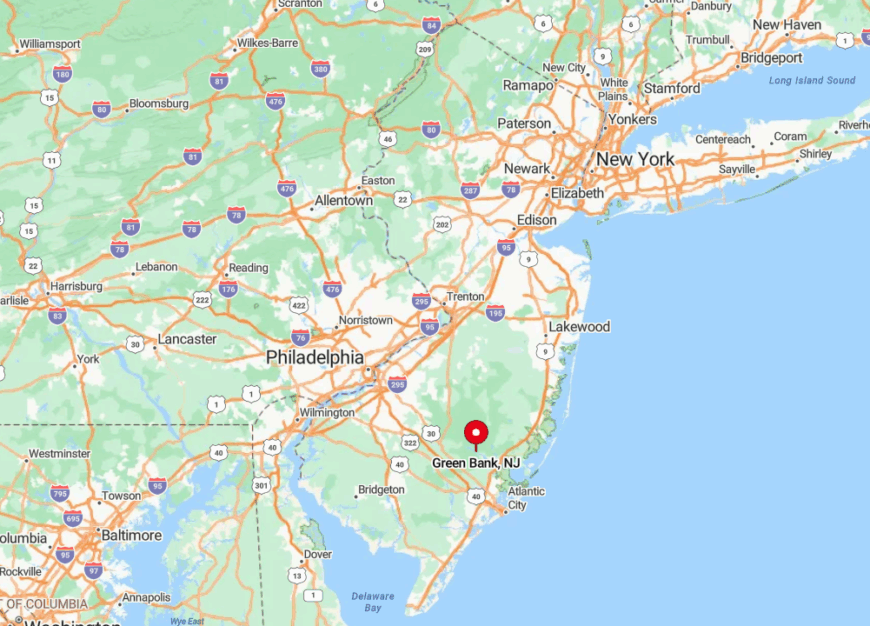
Green Bank sits on the western bank of the Mullica River in rural Burlington County. Wrapped by more than 100,000 acres of protected forest, it is buffered from growth corridors and major highways.
Drivers follow Route 542 past Chew Road and cross a narrow bridge to settle. Those without a car must rely on a seasonal kayak shuttle from Crowley’s Landing, underscoring just how tucked away the village remains.
9. Belleplain
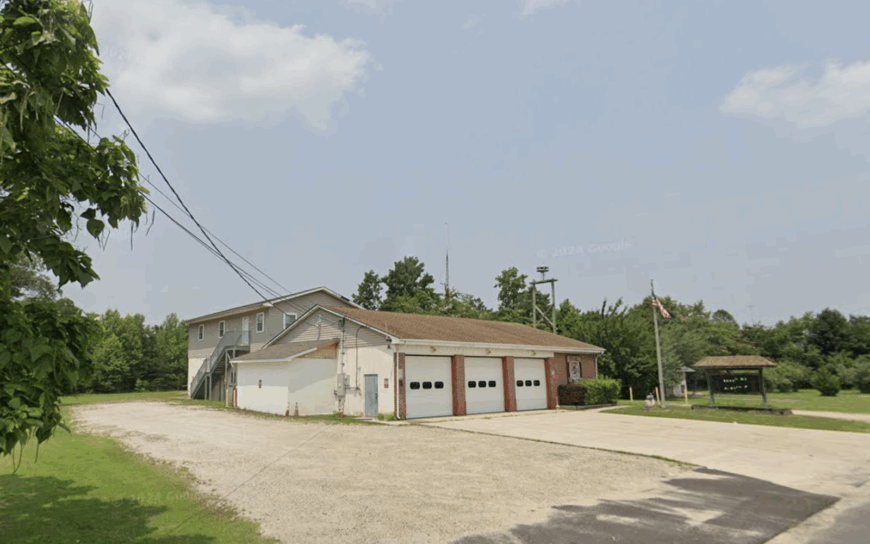
About 600 people call Belleplain home, many in weathered farmhouses tucked behind cedar stands. Locals swim and paddle in Lake Nummy, ride horses on sand trails, or search for orchid species in Belleplain State Forest’s 20,000 acres.
Small blueberry farms and park service jobs provide most paychecks, joined by a smattering of home craft businesses. Cell reception fades quickly, and the closest four-lane road lies nearly 10 miles away, creating a hush broken mainly by tree frogs at dusk.
The village has no chain stores, only the century-old Belleplain General Store serving subs and fishing bait. Lantern light and gravel lanes complete the feeling of being set apart from modern pace.
Where is Belleplain?
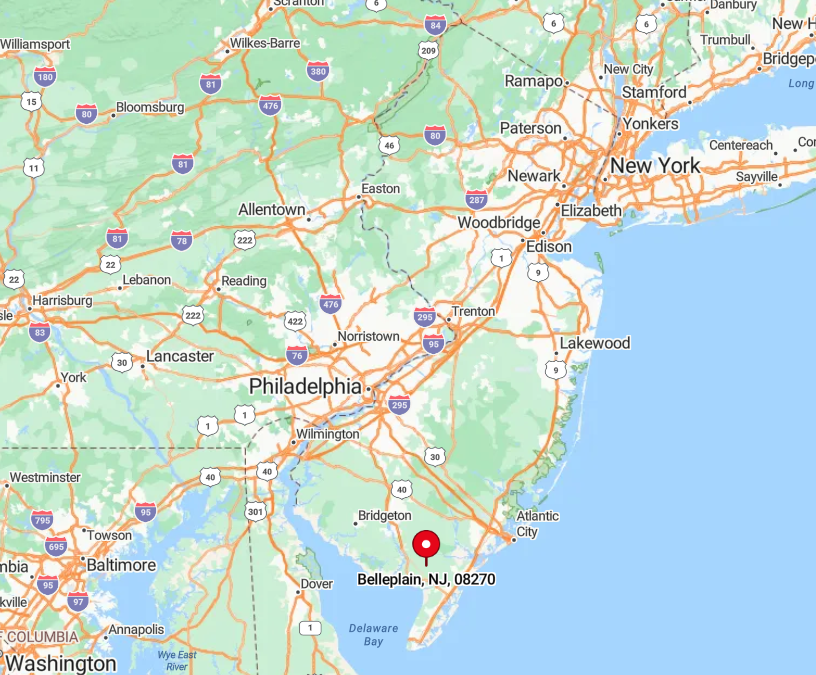
Belleplain rests in northern Cape May County, roughly midway between Millville and Cape May Court House. Forest on three sides and the marshy East Creek to the east hem it in from the suburban push.
Route 550 provides the only direct pavement into town, curving past turkey roosts and saw-cut cedar fencing. Visitors often exit the Garden State Parkway at Exit 17 and drive 12 quiet miles to reach this hidden lake community.
8. Sweetwater

Sweetwater counts around 850 permanent residents, though summer cottages boost numbers on warm weekends. Days revolve around fishing from floating docks, grabbing crabs at the Sweetwater Riverdeck, and navigating backwater creeks by jon boat.
Work comes from small marinas, landscaping outfits, and hospitality shifts at the lone waterfront restaurant. Fifteen winding miles separate the village from the neon of Atlantic City, yet the sandy lanes and absence of curbs make it feel several states away.
Post office hours are short, and mail still arrives by truck down unmarked drives. The Mullica’s broad marshes guard the settlement like a natural moat, preserving its laid-back pace.
Where is Sweetwater?

Sweetwater lies in Atlantic County on the north bank of the Mullica River, opposite Lower Bank. Pines, tidal creeks, and state-owned wetlands form buffers that thwart large-scale development.
Reaching town requires following Route 542 until it narrows, then turning south on Pleasant Mills Road where pavement gives way to crushed shell. Seasonal NJ Transit shuttles stop eight miles away in Hammonton, so most arrivals come by private car or boat.
7. Mauricetown
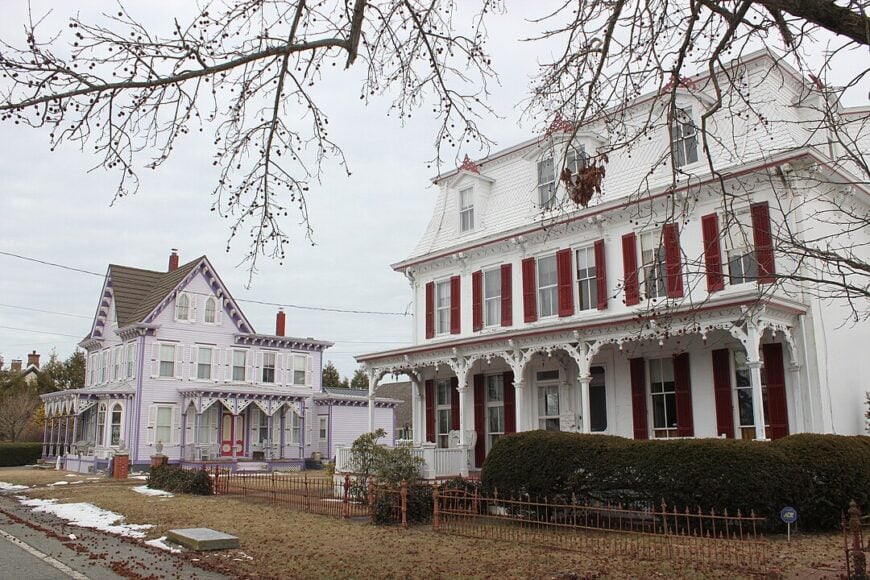
Roughly 400 residents inhabit Mauricetown, many in restored Victorian captains’ homes that overlook the Maurice River. Kayakers drift under the swinging drawbridge, birders scan the salt hay meadows, and history fans tour the Edward Compton House museum.
A niche seafood industry remains, with hand-tonged oysters shipped to Philadelphia restaurants alongside boutique boat repair work. Traffic lights are absent, and nightfall brings only the glow of candlelit windows and the low rumble of the tide.
Antique brick sidewalks and a community herb garden add to its preserved character. The town’s position on a high bluff keeps it dry while surrounding marshland discourages outside sprawl.
Where is Mauricetown?
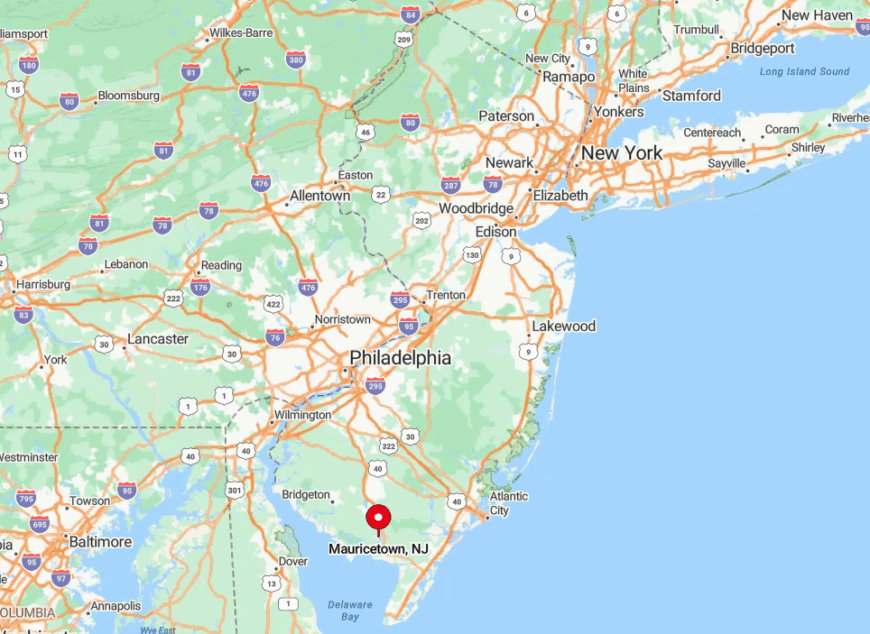
Mauricetown sits in Cumberland County just west of the Maurice River bridge on Route 649. Expansive wetlands to the south and the river’s winding oxbows to the east isolate the hamlet from neighboring Vineland and Millville.
Access involves crossing a narrow steel span that closes during high winds, naturally limiting through traffic. The closest bus stop sits nine miles north in Port Elizabeth, so private vehicles remain the surest route.
6. Chatsworth

Home to close to 900 people, Chatsworth serves as the unofficial capital of New Jersey’s Pine Barrens. Visitors explore cranberry bog dikes, climb the Apple Pie Hill fire tower for 50-mile views, or browse jars of local honey at Buzby’s General Store.
Cranberry agriculture and forestry still dominate the payroll, supplemented by seasonal ecotourism outfits. Homes sit an acre apart, and the pungent scent of pitch pine replaces exhaust fumes thanks to the absence of commuter corridors.
Radio reception fades quickly, reinforcing the town’s self-reliant ethos. Autumn’s Cranberry Festival remains the one weekend when the village feels busy.
Where is Chatsworth?
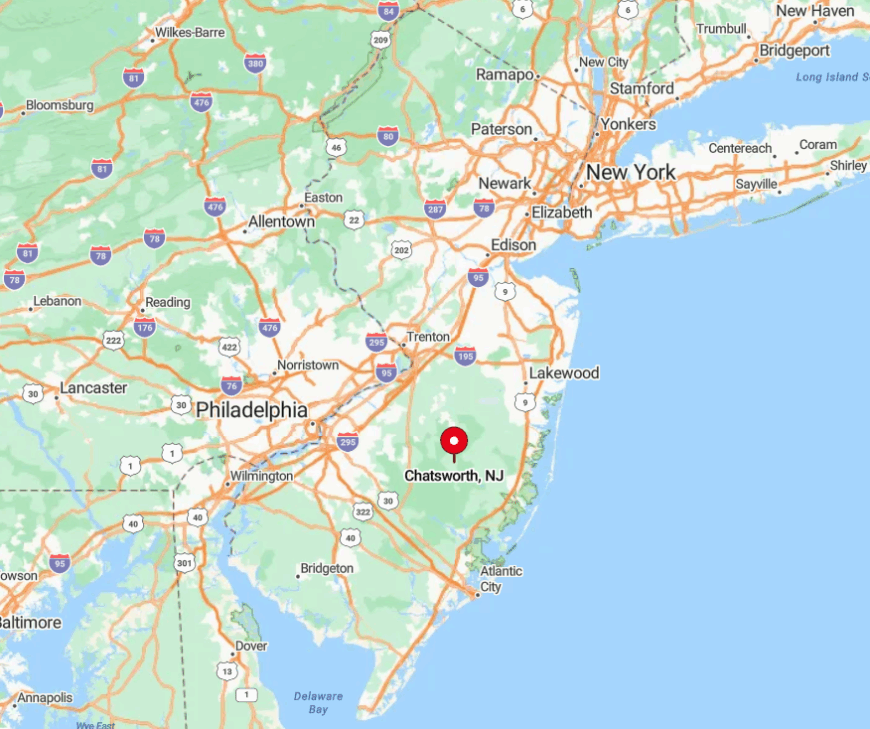
Chatsworth occupies a crossroads in Burlington County where Routes 532 and 563 intersect deep inside Wharton State Forest. Forty miles of protected woodland separate it from major suburbs like Cherry Hill.
Drivers snake through cedar swamps and pass only two gas pumps in the last 15 miles, so topping off beforehand is smart. The nearest rail access is in Hammonton, leaving automobiles as the primary entry option.
5. Delmont
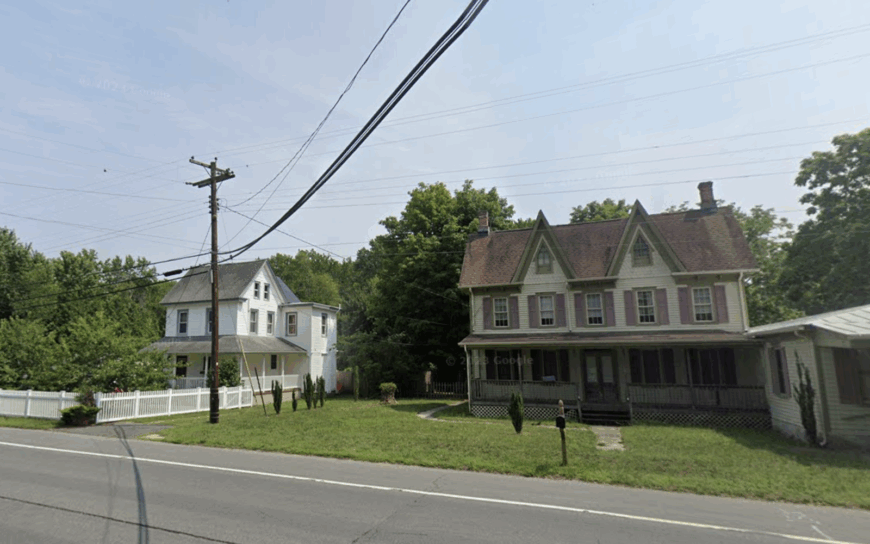
Delmont’s population hovers near 350, spread along three main streets lined with maples and vintage farmhouses. Residents tend backyard gardens, launch kayaks in West Creek, or star-gaze from the ball field where the Milky Way stands out on clear nights.
Employment comes from nearby oyster hatcheries, wildlife refuge staff positions, and small carpentry shops. With Belleplain State Forest to the east and several wildlife management areas to the west, the hamlet sits in a natural pocket free of billboards or chain stores.
Streetlights remain sparse, so porch lamps guide evening walkers. The lack of commercial draw keeps weekend traffic low, heightening the sense of remoteness.
Where is Delmont?
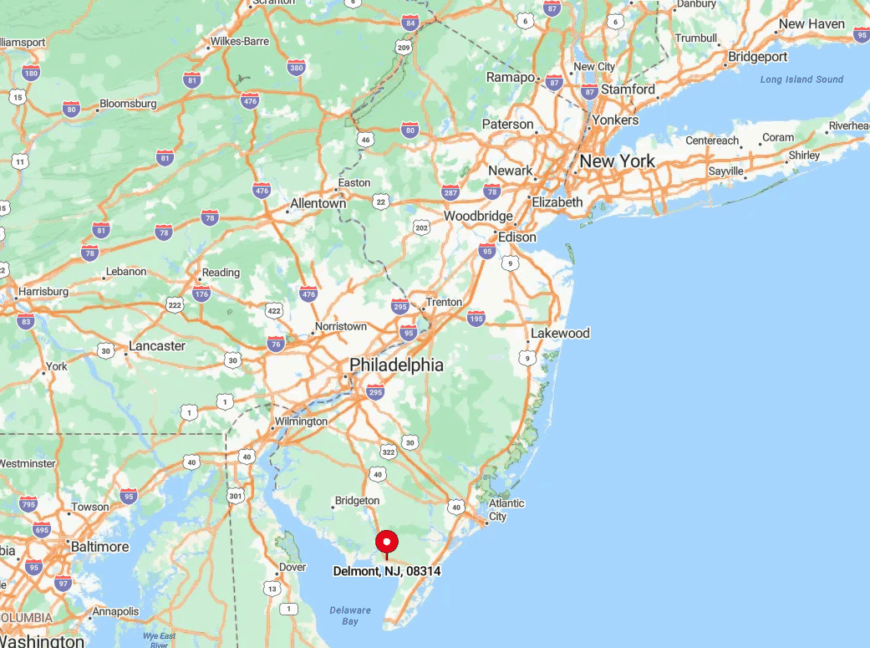
Delmont is in Cumberland County along County Route 553, roughly eight miles south of Millville. Marshlands and managed forests surround the community, acting as undeveloped buffers.
Reaching town involves two-lane roads that weave through hay farms and cedar groves with limited signage. Bus service ends in Millville, encouraging visitors to travel by car for the final stretch.
4. Tuckahoe
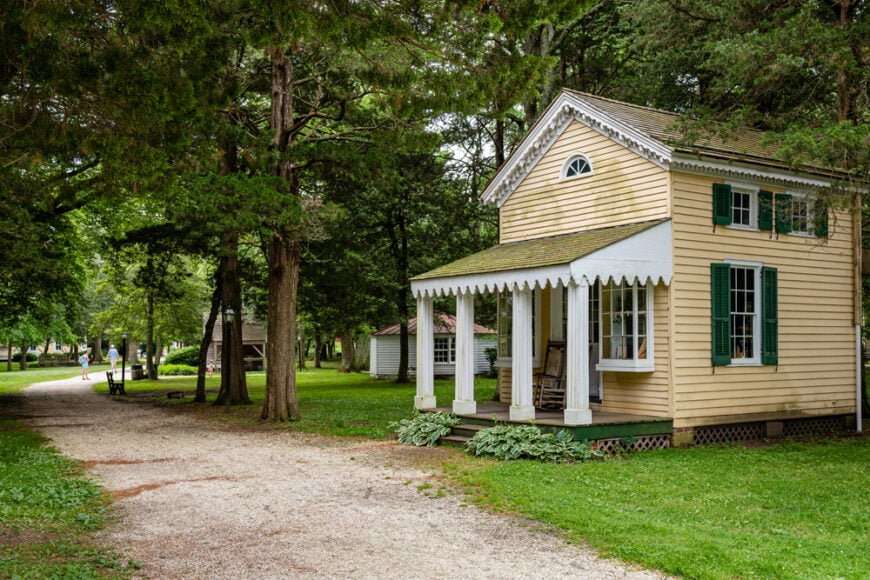
With about 650 inhabitants, Tuckahoe maintains a restful rhythm along its namesake river. Locals cast for white perch at sunset, photograph egrets in the nearby Corbin City Fish and Wildlife Management Area, and gather for Friday night chicken dinners at the historic Saint Casimir’s hall.
Small boatbuilding sheds, seasonal eco-tour guides, and the volunteer fire company constitute the main workplaces. Only one blinking light marks the intersection of Route 50 and Railroad Avenue, and train whistles have long since faded, leaving the area hushed.
The marsh’s open horizon provides sweeping sunrise views that many find meditative. Few outsiders know the cemetery here contains graves of Revolutionary War soldiers, adding quiet heritage to the scene.
Where is Tuckahoe?
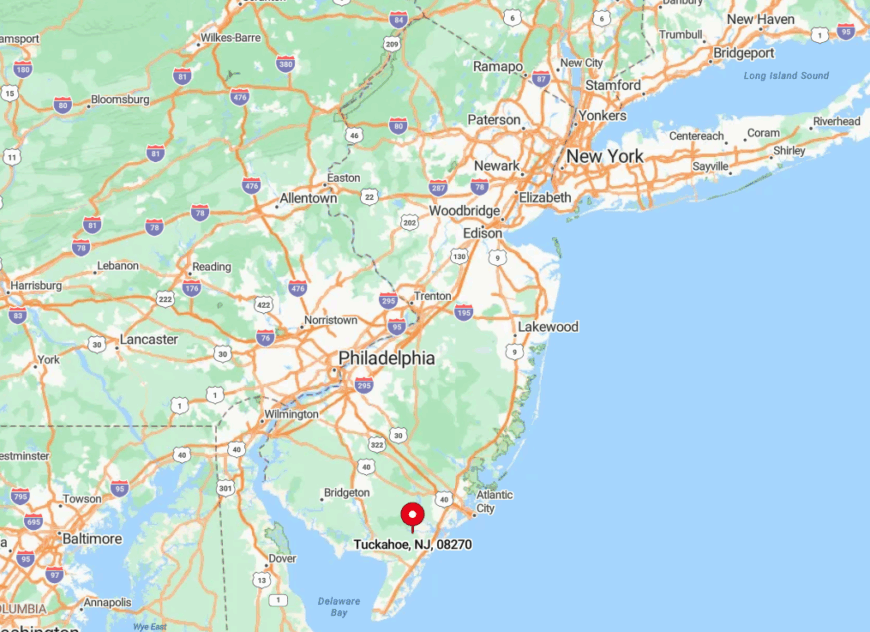
Tuckahoe sits in northern Cape May County, where the Tuckahoe River widens before meeting Great Egg Harbor Bay. Forest peers in from the west, while tidal flats sprawl to the east, effectively bottling development.
Most visitors exit the Garden State Parkway at Marmora, then travel six miles south on lightly traveled Route 50. A disused rail spur parallels the road, hinting at the bygone era when trains provided the main access.
3. Dorothy
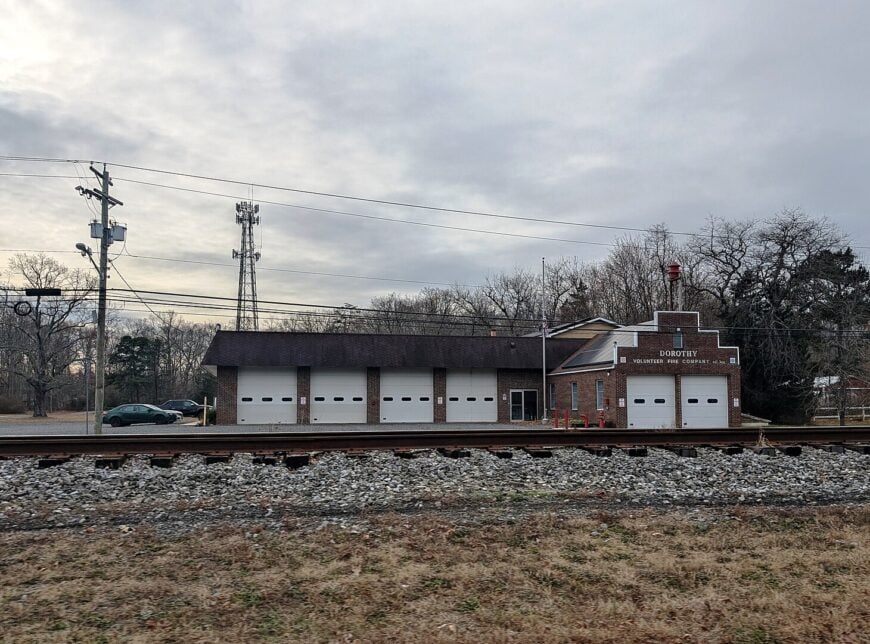
Around 1,100 residents live in Dorothy, their ranch homes set back from quiet lanes bordered by oaks and scrub pine. Weekend hobbyists ride ATVs on sand trails, pick blueberries at family farms, or browse rare vinyl at the hidden-away Hangar 84 shop inside a repurposed airplane hangar.
Agriculture and small engine repair shops drive much of the local income, echoing the settlement’s roots as a farming colony. Dorothy lacks sidewalks and traffic signals, promoting a slower rhythm where children still bike to the corner deli unchecked.
The thick pinelands form a natural sound wall against outside bustle. At night, frogs from nearby cedar swamps outnumber passing cars.
Where is Dorothy?
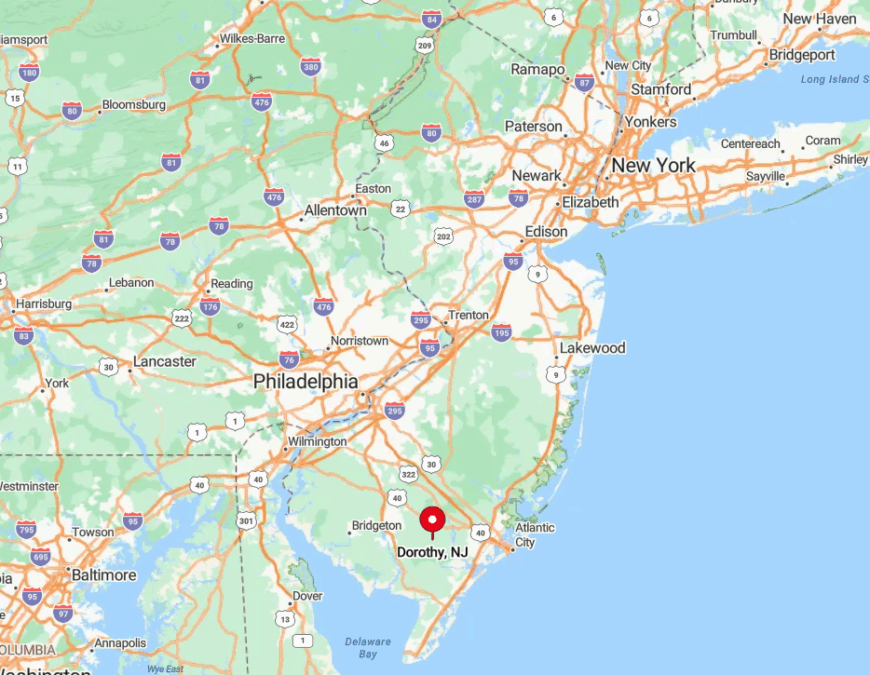
Dorothy claims a rectangular patch of Atlantic County inside Weymouth Township, about 11 miles west of Ocean City beaches. Pines, state conservation parcels, and long stretches of county road without intersecting routes keep through traffic away.
Drivers usually approach via Route 50, then follow Tuckahoe Road until the GPS signals waver. Without public transit stops inside town, personal cars remain the only practical entry.
2. Port Norris
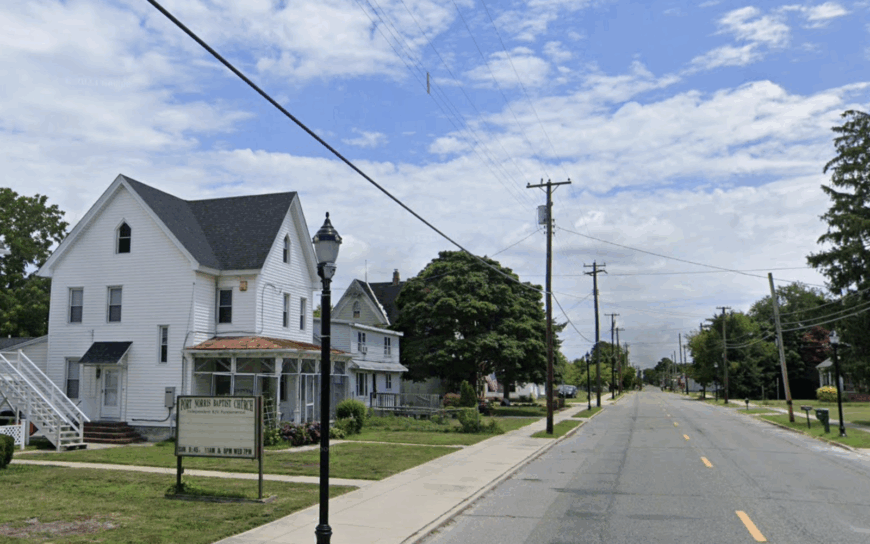
Port Norris supports roughly 1,200 residents clustered along the Maurice River’s brackish reaches. Daily life centers on oyster dredging, boat maintenance, and visits to the Bayshore Center at Bivalve with its museum and restored schooner AJ Meerwald.
Photographers find endless subjects in weathered oyster sheds and sun-bleached crab traps while cyclists tackle the flat causeway to Money Island. The settlement’s out-of-the-way feel stems from miles of salt marsh flanked by impoundments that thwart expansion.
Foghorns and gull calls provide the prevailing soundtrack, not traffic. Stately captain’s houses stand as quiet witnesses to a shellfish era still alive but decidedly unhurried.
Where is Port Norris?

Port Norris sits at the southern tip of Cumberland County, where the Maurice River meets Delaware Bay. Swaths of Spartina marsh and open water isolate the community from inland towns.
State Route 553 is the single paved approach, crossing long causeways that close during severe storms. The nearest NJ Transit bus ends in Millville, making personal vehicles the regular link.
1. Port Elizabeth

Fewer than 220 people reside in Port Elizabeth, most within sight of two 18th-century churches that anchor the settlement. Visitors kayak Maurice River tributaries, explore the historic Dennis Creek lighthouse foundation, or browse colonial gravestones behind the Old Stone House.
Limited commerce includes a feed store, a seasonal canoe outfitter, and small-scale oyster farming upriver. Situated at the junction of two rural routes yet bypassed by modern highways, the village feels frozen in a quieter century, with wetlands and preserved farmland guarding its edges from suburban approach.
Evening skies glow amber over the marsh, and traffic sounds barely reach front porches. The timeless atmosphere invites reflection and long conversations under porch ceilings painted traditional haint blue.
Where is Port Elizabeth?
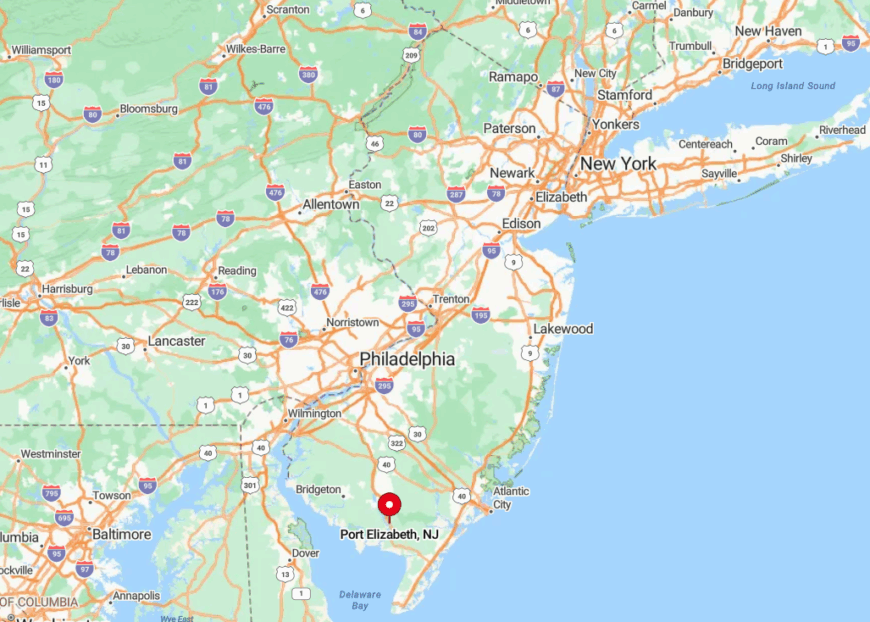
Port Elizabeth rests near the Cumberland-Cape May county line, where Routes 47 and 548 cross. Low-lying wetlands to the east and protected forest to the west discourage large-scale building and keep through traffic light.
Drivers from Philadelphia typically follow Route 55 to its end, then wind 18 miles south along tree-lined Route 47. There is no direct bus or rail service, making a private vehicle or an ambitious bike ride along the flat river corridor the practical approach.

